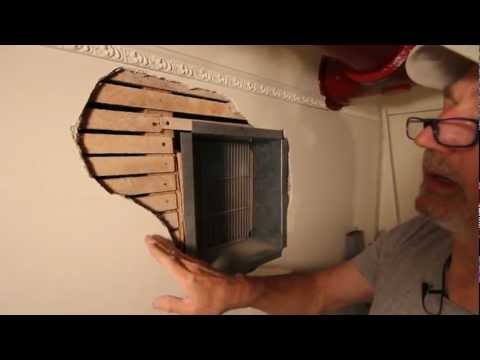This video is from WoodcraftBySuman, a YouTube woodworker who "tests woodworking stuff." In this video, he tests not whether the wood glue is stronger than the wood (everyone knows it is) but at which point it becomes stronger. Do you really need to clamp it overnight? Here is a lightly edited transcript of the video.
Have you ever looked at a bottle of wood glue that said 30 minutes of clamp time, but you went ahead and clamped it overnight anyway? You know, just to be safe? Let's test that to see exactly how long you really need to clamp wood glue.
Understanding joint strength
This is a set of five Glued-up boards that have been drying with a clamp on for 24 hours, the usual scenario for most woodworkers, including myself. Let's crack them.
Super consistent.
If we remove the highest and the lowest values and average out the middle three, it took 428 lbs of force to break this Cherry board. At a closer look, you can see that the failure was the wood and not the actual glue joint. This jig is designed in a way where almost all of the pulling forces are concentrated in the middle where the two boards meet, yet the brutal pulling forces found a weaker area next to the glue line to break the wood itself, but I'm willing to bet you already knew that, right?
Comparative strength of glue and wood
Wood glue is stronger than the wood itself. Can you still get this much strength after just 30 minutes of clamping? We're definitely going to get to that, but right now, I have five boards with no glue in them whatsoever, and we need a baseline of comparison.
On average, these white Cherry boards without any glue in them took 811 lbs of force to break. But if the wood broke in both scenarios, shouldn't the breaking forces be similar? Not exactly. While the glue line is stronger than the wood, it also makes the middle of the joint more stiff and less forgiving to its neighboring wood fibers. That's the part that fails. The natural wood, on the other hand, can bend almost into an arc and better distribute the forces, making it much harder to break them.
Testing conditions and techniques
We're using 3-1/2 inches by 7 inches of cherry that is 1 inch thick in all of these test pieces because no joint test is meaningful without an excellent tight fit. I'm using a hand plane with both edges lined up next to each other such that when you fold them inwards like a book, it creates a gap-free joint.
Your move power tool users. In all of these cases, I'm using two clamps with 700 lb of clamping force that totals to 1,400 lb because our glue joint has an area of 7 Square in that gives us 200 PSI of pressure, which is within tight Bond 3's recommended clamping, range pressure of 175 to 250 psi. Personally, I think 175 to 200 PSI is overkill because PSI is a measure of pressure per square inch; it would be tough to achieve that much pressure on thicker and longer glue-ups without putting a lot of clamps every couple of inches.
Experimental results and recommendations
I've been doing woodworking for about a decade now, and I've never really gone overboard with the number of clamps that I use or how tight I clamp them, so indulge me for a second as I glue up five sample pieces where they're pressured by none other than these hands. We will come back to these later in the video to see if no clamp is just as strong with a nice tight-fit joint while that's drying. Let's return to our standard tests of finding joint strength over clamping time.
This sample has been drying in the clamps for 12 hours in the clamps. On average, it took 341 lbs to break these joints. In every case, the glue joint held up just fine, and the wood fibers were the ones that snapped. If you're keeping track, the 12-hour clamping time is only 20% weaker than the 24-hour clamp time. I just saved all of your clamps a pointless 12-hour shift. As a woodworker, you probably know from experience that 12-hour and 24-hour clamp time works just fine, so let's go in the extreme opposite direction and work our way up, starting with 5-minute clamp time.
And I have to tell you I'm sweating bullets here while doing this test because we have such a short window that all of the steps have to be perfectly executed each time. After all, we have such a short window. This is an excellent time to mention that all of the glue-ups were done more or less in the exact same way at room temperature and humidity, and all of that stuff was identical. The wood grain orientation was, well, I tried to mix and match the wood grain as much as possible, but wood is a natural material, and it kind of does what it wants. Okay, let's watch this 5-minute clamp break in real time.
Oh, right, so I did four more samples for the sake of science, but they pretty much all broke before I could get it into the testing J. Tight Bond's website says this glue has an open assembly time of 8 to 10 minutes. It is clear that 5 minutes is just not enough time for the glue to dry and provide any strength before removing the clamps.
Up next is the 15-minute clamp time. Now that we're getting past the cusp of open assembly time for this glue, we're getting the pieces to hold together strongly enough for the actual testing, but the joint is still very, very weak. On average, it took just 4 lbs to break these joints. Yikes. Definitely don't touch those clamps at this stage of your glue-up. Tight Bond recommends a minimum of 30 minutes of clamp time and leaving those joints undisturbed for 24 hours.
30-minutes of clamping is not nearly enough
But just how strong is the joint just after 30 minutes? On average, it took just 5 pounds of force to break these joints, and they all broke at the glue line. After 30 minutes on the clamp, the wood felt pretty solid to me on the hand, and if I hadn't done this test, I would not have known just how weak this joint actually is.
Some of you might wonder if the amount of glue or the type of wood species can impact this test. My answer to that is probably, but I will level with you guys here. I'm an average guy with a full-time job a tiny human and an even tinier YouTuber Channel each of these videos take about 60 to 70 hours for me to produce and I only have so much time and resource in a week. But if you do like this type of content, consider subscribing to the channel. It obviously helps the channel out, and together, we can get to doing more tests and doing more crazy things. And thanks, I appreciate that.
Exploring longer clamping times
Up next is the 1-hour clamp time. This took an average of 58 lbs to break, and they all broke at the glue line. But the next test is far more interesting to me. After 4 hours of clamping, four of the five joints had partial failure at both the glue line and the wood. So we're at this duke session between the glue and the wood, and they're both kind of winning. Unfortunately, The fifth joint failed at the glue line, but it gave a perfect fight. Oh, and on average, breaking these joints took 153 lbs of force to break these joints.
Do you guys remember the glue-up with no clamps whatsoever? Yeah, that one. Well, they've been drying for 24 hours, and now it's time to see if my hands are as good as these Bessie clamps. On average, and I'm so excited to tell you this, it took 376 lbs of force to break them. This is only 12% weaker than the 24-hour clamped version. Does this surprise you? It doesn't surprise me because I've done plenty of picture frames, boxes, and all of these things with just tape and sometimes spring clamps, and those projects held up just fine.
Conclusion: 4 hours of clamping is probably enough
I hope this illustrates to you how a tight-fitting joint does not need a lot of clamping pressure, and you should focus more on the fit of your joint and less on choking your clamp handles. Finally, the manufacturer recommended a test. These were clamped for 30 minutes, the clamps removed, and the joint left undisturbed for 24 hours. You've waited, I've waited, it's been 24 hours, so let's crack them.
Really, on average, these joints took 227 lbs to break, and surprisingly, all of the failures were at the glue line. I really don't know what happened here, guys; maybe someone smarter than me can explain this to me in the comments. So, the big question here is how long you should clamp your projects for. Well, I don't recommend 30 minutes. So if you have perfectly milled wood with favorable temperatures and you like to live maybe just a little dangerously, 1 hour is a perfectly suitable time to remove those clamps, especially for smaller projects, because the strength you get at 1 hour is pretty good.
For the risk-averse chickens like myself, I will start removing my clamps at 4 hours and free those clamps for the next glue-up because by 4 hours, the joint is nearly as strong as the wood.
An old saying in woodworking is that you can never have too many clamps. Maybe that's true, but I hope you'll need far fewer clamps because of what you learned in this video.











